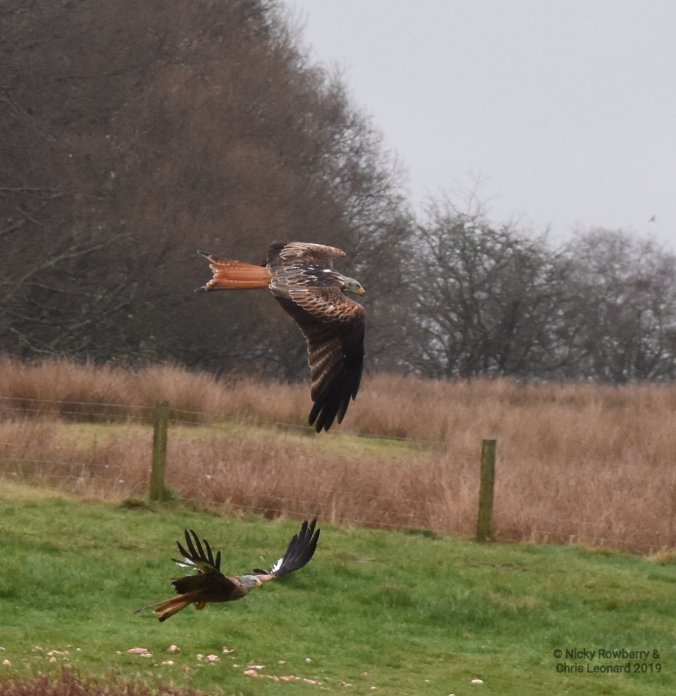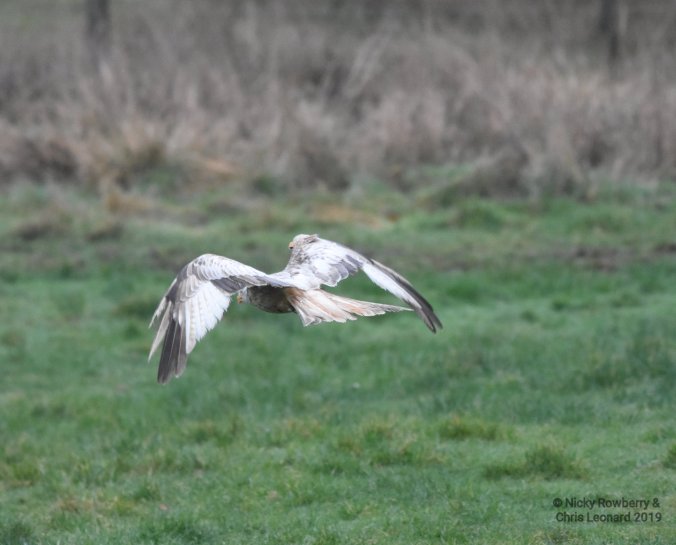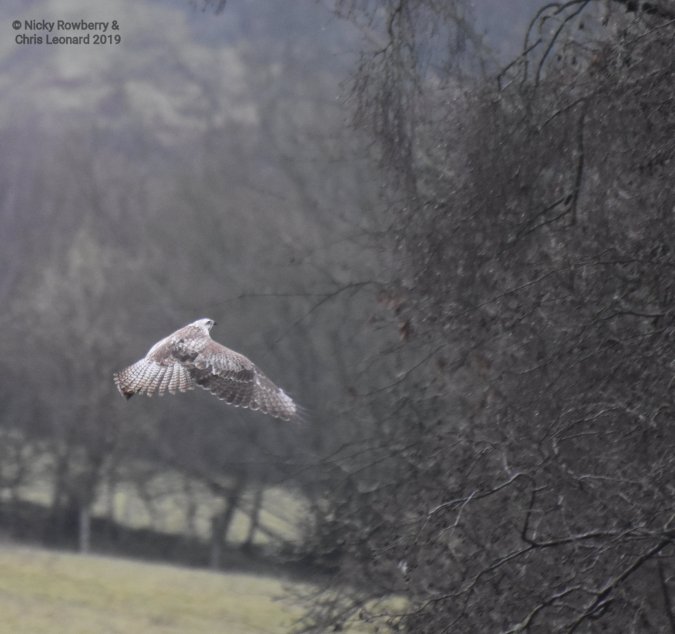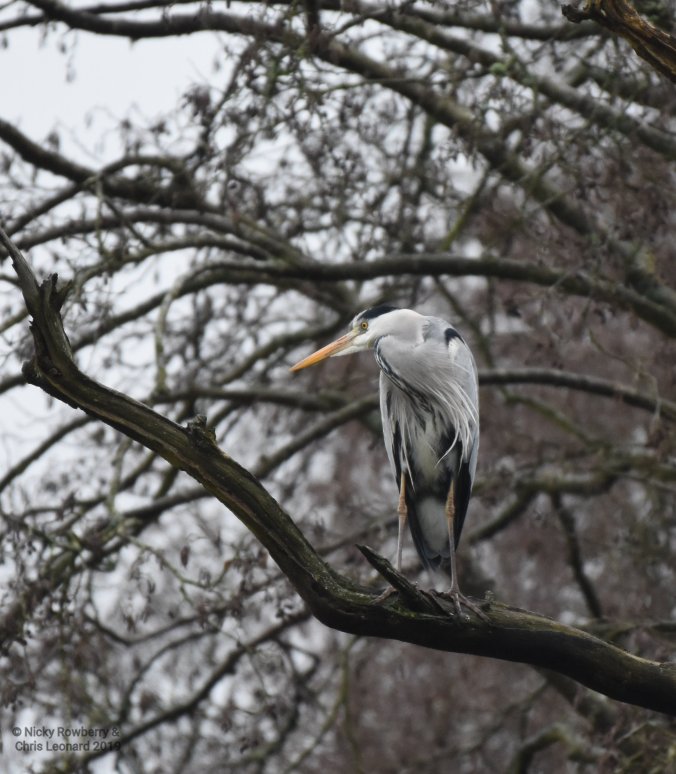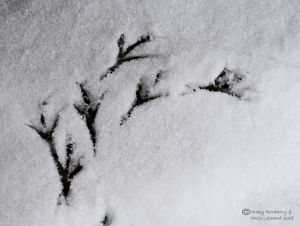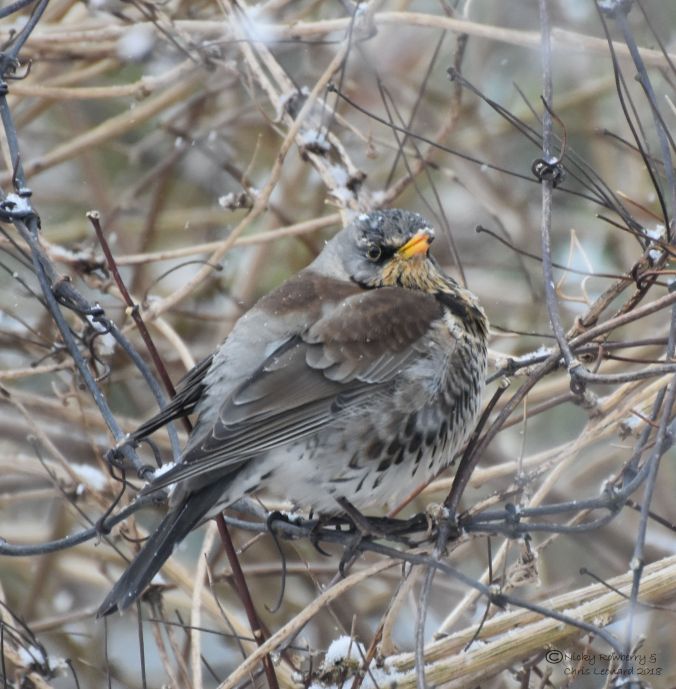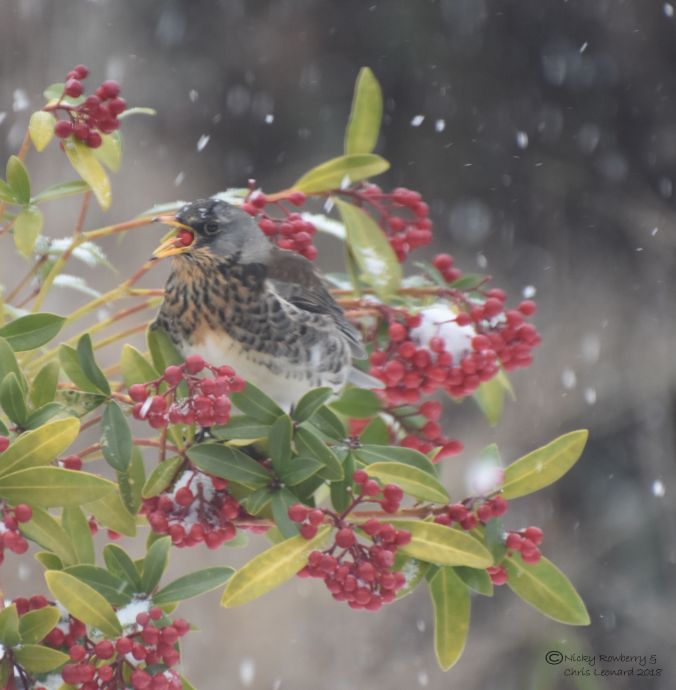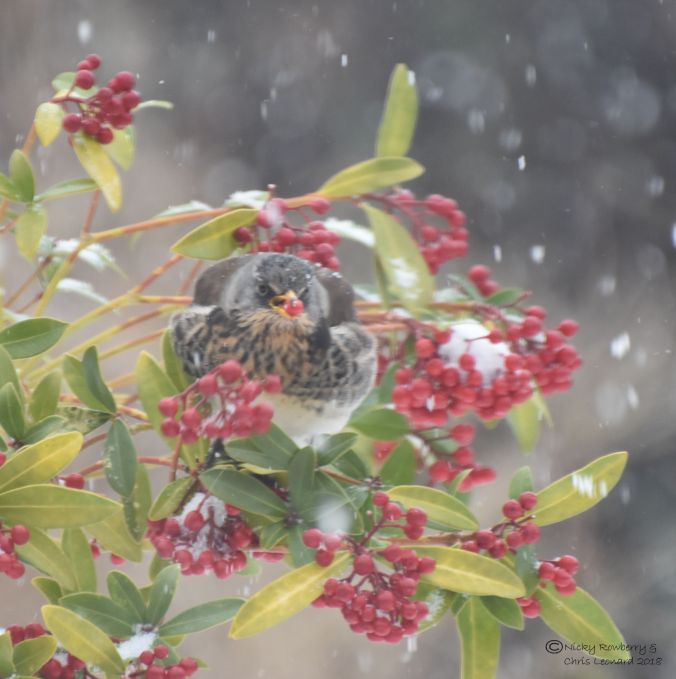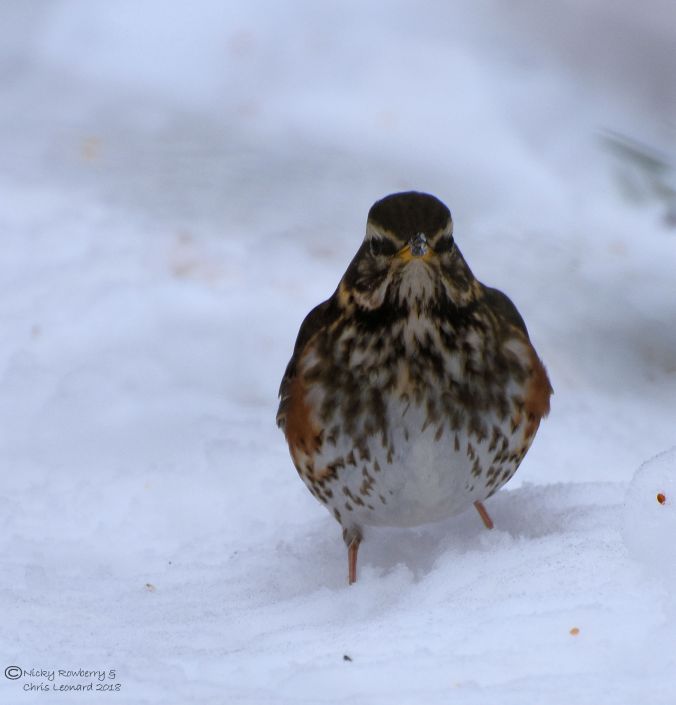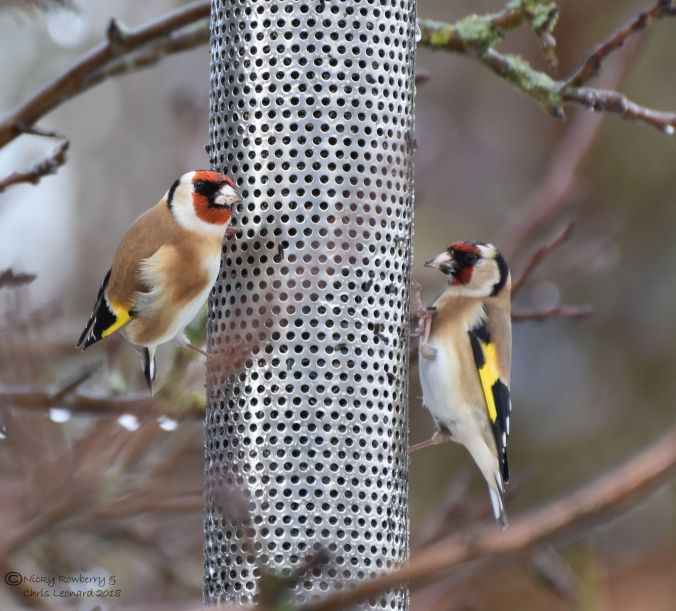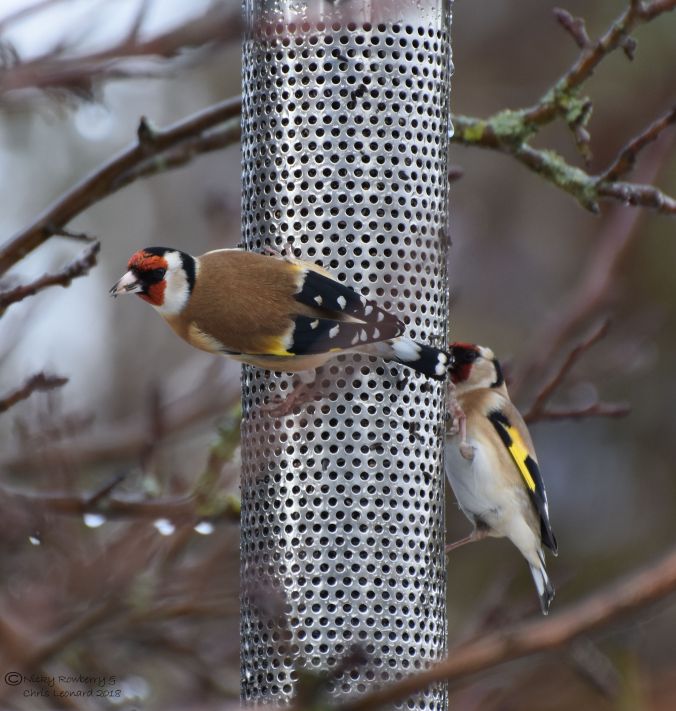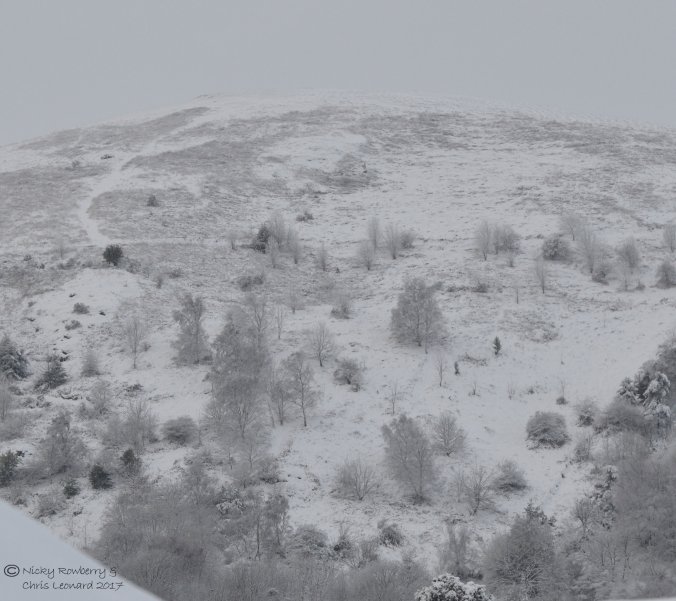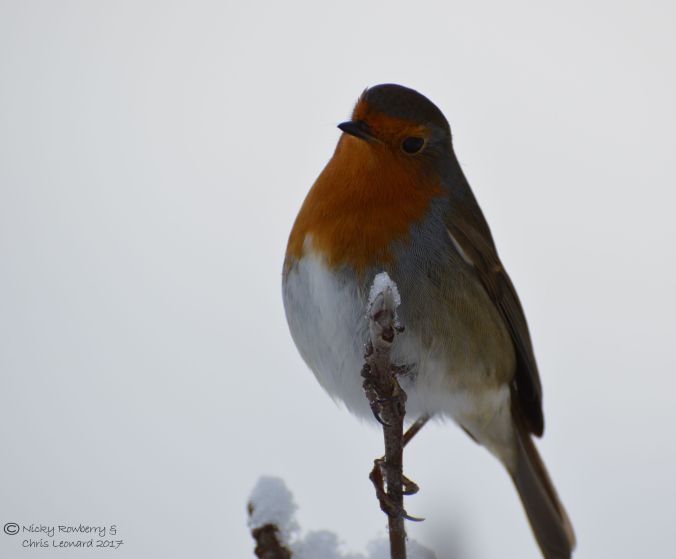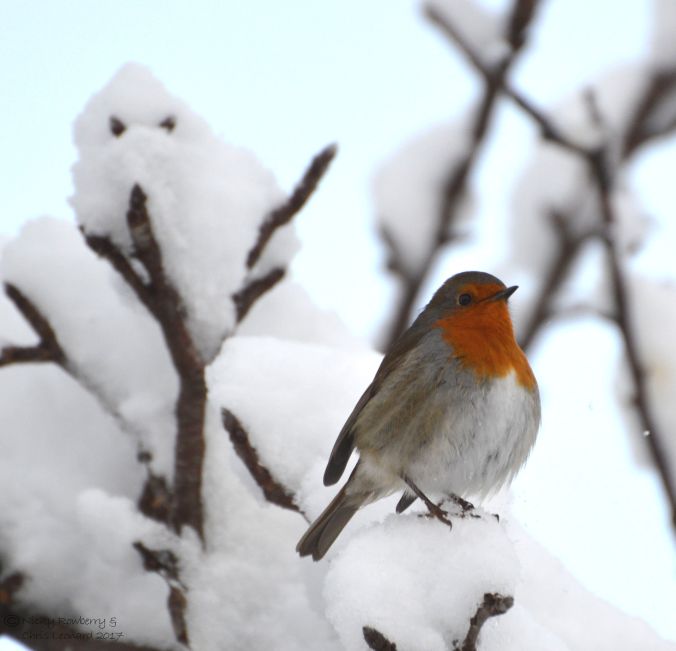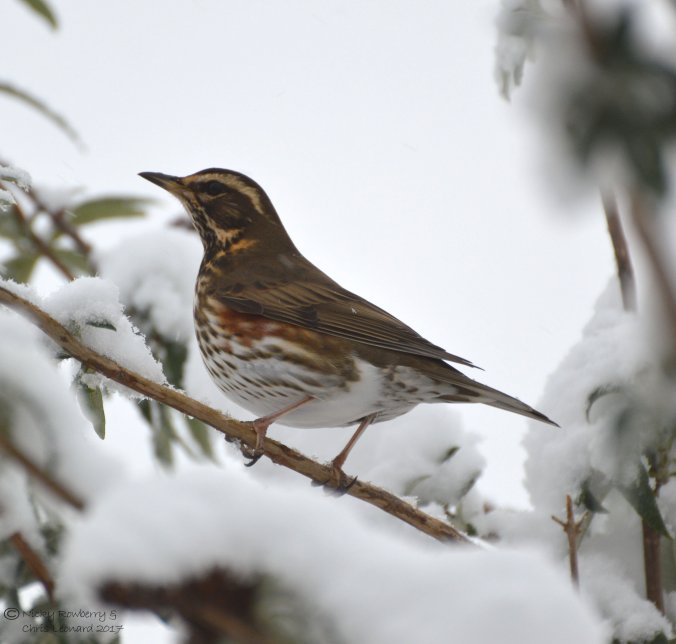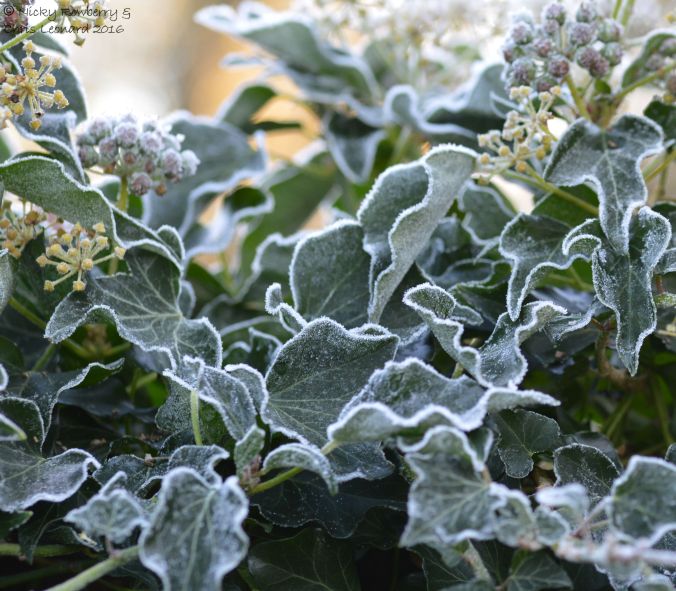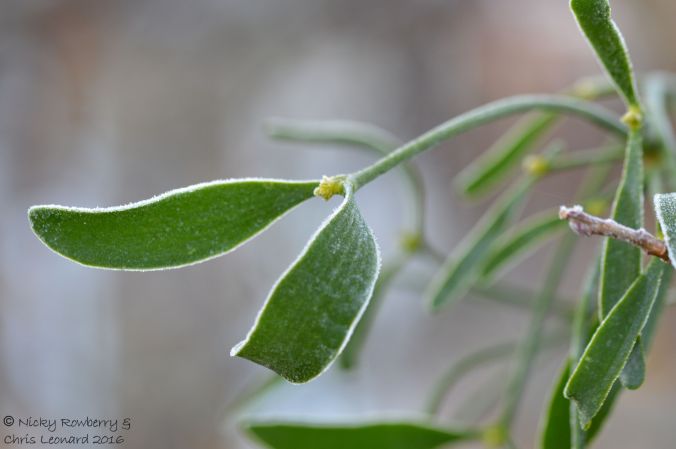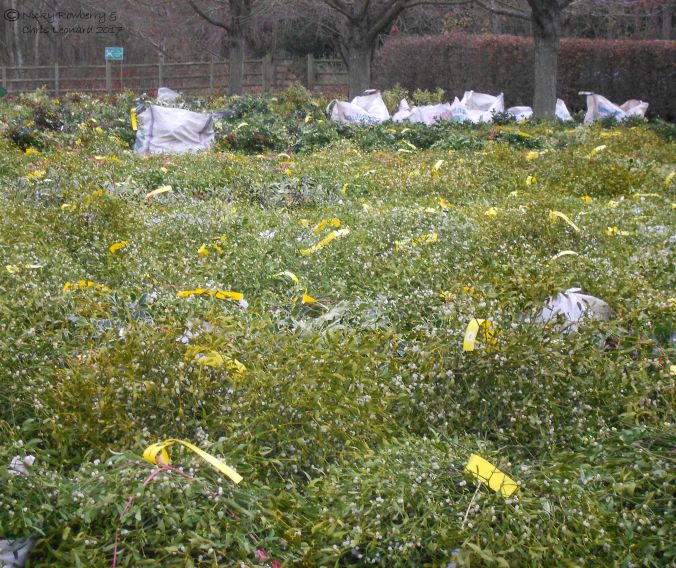Barcud Coch & Cwm Elan – well I hope I spelled them right (now I’m also worrying that I’ve spelled “spelled” wrong – should it have been spelt?) – or in English, red kites and the Elan Valley for a fantastic day out. We headed over to the Elan Valley first as several friends had recommended it as being well worth a visit. We somewhat underestimated how much was there and only had time to drive around about half of it, but the half we did see was amazing. The Elan & Claerwen valleys have been dammed in 6 places and the result is beautiful reservoirs set in even more beautiful countryside.
Our visit was on a bit of a dreary day weather-wise, but it had the advantage of giving everything a beautiful misty (bordering on foggy) atmosphere.
There was snow on some of the highest peaks, but nothing to hamper our exploration. In places the road was lined by avenues of tall trees, but elsewhere the views were pretty breath taking.
None of the dams were actually flowing on our visit, but hopefully next time we go back they might be. We found a well-kept (and surprisingly empty) bird hide, from which we could just about make out some ducks in the distance – too far away to get decent photos, but just close enough to identify them as a male (bottom) and female (top) goldeneye.
After the dams, we headed back through the small town of Rhayader to go to the Red Kite Feeding Station at Gigrin Farm. We’d pre-booked spaces in their photographic hide and had to be there by 2pm for the feeding. Gigrin Farm have been feeding red kites since the early 1990s. Having started with just a few pairs, they now regularly have over 300 red kites coming to the feeding station. So we were expecting a lot of kites, but have honestly never seen anything quite like it.
 As we approached the hides, we spotted a huge white bird in the distance across the field. Turned out it was a leucistic red kite; leucistic birds are not the same as albinos as they still have pigment in their eyes. Apparently up to 1% of the Welsh red kites are actually white or partially white.
As we approached the hides, we spotted a huge white bird in the distance across the field. Turned out it was a leucistic red kite; leucistic birds are not the same as albinos as they still have pigment in their eyes. Apparently up to 1% of the Welsh red kites are actually white or partially white.
As 2pm drew closer we could see more birds amassing in the surrounding trees. They clearly all knew what time the food was due.
2pm on the dot and a tractor appeared to dish out the meat for the birds. Within seconds the sky was full of swirling kites – literally hundreds of them. Chris took a video just with his phone which gives some idea of the sheer number of birds filling the sky.
I then tried to film them as they swooped down to pick up the meat. They are so fast it looks as if the film has been speeded up, which it hasn’t.
Initially we thought this was great and we were going to get loads of amazing photos as they were all so close. Then we discovered the problem – there were so many and they moved so fast, it was impossible to focus on just one and get a nice sharp photo. We can now understand why small birds flock together in large numbers to confuse predators; this massive flock of kites had the same effect confusing us photographers. So although we took over 750 photos between us, I don’t think a single one is as crisp and clear as we would have liked. In our defence we weren’t helped by the dull overcast weather and it may have been better on a sunny day.
Having said all of that, it was still an absolutely stunning spectacle. Once we stopped worrying about the photos and just stood back and watched, it was just incredible. We have seen red kites before of course, but never so close up. I hadn’t realised how huge they are; their wingspan is pushing 2 metres!
The numbers swooping down at any one time were incredible.
This next photo looks like it is a composite shot of 4 birds, but is actually 4 in a row, all swooping down and off again one after another.
When viewed in the sky they almost formed an abstract pattern silhouetted against the sky, wings pointing in every conceivable direction.
Their aerial acrobatics were phenomenal, twisting and turning as they dived. They’d scoop up a piece of meat in their talons, then bend over to transfer the prize to their mouths to eat.
Here are a few more photos of them for no other reason other than they are really photogenic birds.
The white kite that we’d seen as we arrived put in several appearances, easy to spot amongst the more usual coloured ones. He/she appeared to have a number tag on his wing, so may be part of some study.
Red kites of course weren’t the only birds of prey making the most of the meaty picnic. We saw several buzzards watching from the trees. Perhaps because they are slightly smaller than the red kites, they are content to wait their turn.
We didn’t see any come down while we were there (although to be honest there may have been some amongst the melee of red kites), but we did see this one glide beautifully into the tree, displaying its gorgeous fan shaped tail.
And of course there were large members of the crow family making the most of the opportunity too. Initially we thought they were all carrion crows, but I think there were a few rooks lurking in there too – distinguishable by their paler beaks and pointier looking heads.
Final treat of the day – a heron flew lazily (in comparison to the kites at least) across the field and landed in a tree.
Hopefully we can go back to see the kites again in the summer when the light should be better and we can perhaps get crisper photos. But in the meantime we’ve got the memories of one of the most amazing wildlife spectacles we’ve ever seen.







